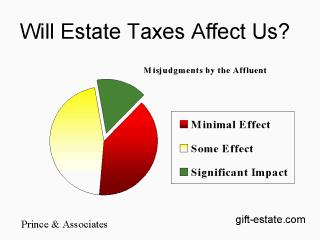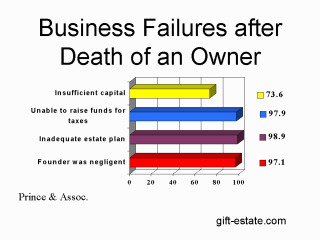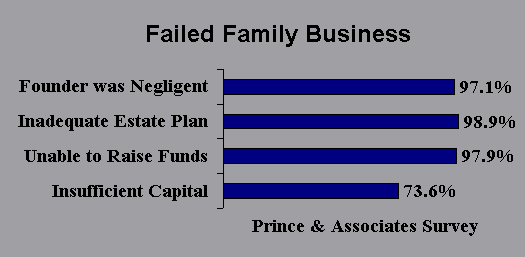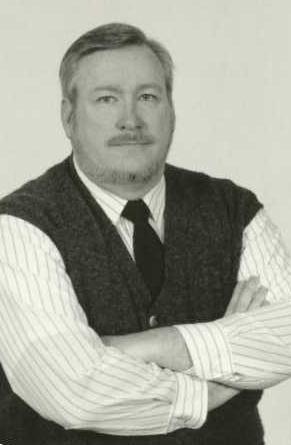MAYBE IT’S (NOT JUST) ME – % Vaughn Henry & Associates
I’m not alone – at least about the dangers of CRSD (Charitable Reverse Split Dollar) and its progeny, what some people are calling charitable split dollar. Here are some recent comments:
Eric Dryburgh: In the highly respected Charitable Gift Planing News, August 1998, Pg. 5 ( 972-386- 8975) the author states,
“There are many variations on the theme, involving insurance trusts, partnerships, and other legal entities. Nevertheless, the basic legal concepts and legal risks are the same.”
“The charity must issue a receipt which accurately reflects what it receives. If the funds are not used to pay the policy premium, the receipt can appropriately reflect an unrestricted gift of cash. If the charity pays the policy premium, however, the receipt should reflect a nondeductible gift.”
NCPG: The Executive Committee of the National Committee on Planned Giving (NCPG) has reviewed a number of these plans and has concluded,
“Life Insurance “Quid Pro Quo” Poses Risks to Donors, Charities” and stated, “Notwithstanding the promoters’ claims to the contrary, NCPG strongly suggests that donors and charities not proceed with the kind of gift arrangement described above without first obtaining a private letter ruling from the IRS on the “quid pro quo” and partial interest issues
Its position paper states “CRSD is a high-risk venture that may expose donors to adverse income tax and transfer tax consequences and may endanger the tax-exempt status of charities that participate.” “Failure to note on receipts a charity’s intention to participate in the CRSD plan could violate both federal tax law and the Model Standards of Practice for the Charitable Gift Planner, adopted by NCPG May 7, 1991. Furthermore, participation by the charity in a CRSD program could put the charity at risk of loss of tax exempt status under the private inurement rules, which the IRS has interpreted broadly, in other contexts, to include contributors to organizations.”
Horowitz Scope Goldis: In “The Myths of Charitable Split Dollar and Charitable Pension”, Journal of the American Society of CLU & ChFC, September 1995, Pg. 98 the authors state on the subject of CRSD:
This is not merely aggressive tax planning, it is egregious and borders on tax fraud…”
Douglas Freeman: Planners should also carefully read the objective, balanced, and scholarly “CHARITABLE REVERSE SPLIT-DOLLAR: BONANZA OR BOOBY TRAP?” by well known and highly respected Los Angeles attorney Douglas K. Freeman in the Journal of Gift Planing, 2nd quarter, 1998 (317 -269 – 6274). Freeman states in a recent ALI-ABA Course of Study on Charitable Giving Techniques given May 7th and 8th in San Francisco,
The reverse split-dollar technique is aggressive planning without substantial reliable authority”, “charitable reverse split-dollar is an attempt to stretch an aggressive program further”. “Charities should never use their influence and reputation to promote a risky program that could influence donors to engage in an arrangement that could result in adverse economic or tax consequences to such donors.”
Scrogin and Flemming: Attorneys John J. Scrogin and Kara Flemming of Roswell, Georgia wrote two excellent and well reasoned discussion articles in the May 1998, Pg. 2 and June issues of Financial Planning Magazine entitled, “A Gift With Strings Attached?” and “One Gift, Many Unhappy Returns” in which the authors state that charitable reverse split dollar plans may suffer the same fate that befell tax shelters in the 1980’s and that donors, charities, tax preparers, and plan promoters are all vulnerable if the IRS cracks down on charitable reverse split dollar plans.
Frank Minton: Frank Minton, the Ethics Chairman of the National Committee on Planed Giving, has stated that,
“Overcharging charities for premiums by using actuarial tables that exaggerate the true cost of life insurance benefit the donor by reducing the amount the donors must pay.”
Michael Huft:In the November 1998 issue of Trusts & Estates, Michael Huft states,
“The problems faced by the charity are potentially more serious than those faced by the donor, for in addition to the possibility that the charity will fail to realize the expected benefits of CRSD, the charity may lose its tax exempt status and its trustees or directors may face liability for breach of fiduciary duty.”
Billitteri and Stehle: In “Brilliant Deduction?”, The Chronicle of Philanthropy, August 13, 1998 the authors quote Marc Owens, director of the I.R.S. Exempt Organizations Division:
“The service is examining whether donors improperly violate federal tax laws by participating in these deals, which currently are being offered by a small number of estate planning companies and their representatives….Charities are supposed to be doing charitable things, not acting as a clearing house for one’s life insurance premiums.”
The service is “actively looking at charitable split-dollar plans in pending cases that include both audits of existing charities and applications by new groups seeking tax-exempt status.”
The article quotes Attorney Douglas K. Freeman as saying
“This thing has some fatal flaws, and the worst part of this is, it puts the charitable institutions at risk.”
Conrad Teitell: Teitell noted in the Oct. -98 edition of his TaxWise Giving that charities and their representatives that give inaccurate information to donors about a gift’s fair market value or incorrectly tell donors that a quid pro quo gift is fully deductible are subject to the abusive tax shelter penalties of IRC Sec. 6700 and 6701. This is the civil penalty imposed on promoters, salespeople, and their assistants who organize or sell a “plan or arrangement” constituting an “abusive” tax shelter.
Abusive is defined as a statement concerning a tax benefit that the person knew – or had reason to know – were false and “gross” valuation overstatements of the property’s value. Both the false or fraudulent statement and the gross valuation overstatement must relate to a material matter. Teitell points out that “a person furnishing a gross valuation overstatement need not have knowledge of the overvaluation to be penalized.” He notes that “an aiding and abetting provision imposes a penalty on persons (such as the president or treasurer of a charity) who help prepare false or fraudulent tax documents that could result in a tax underpayment provided the person knew or had “reason to believe” that the document is material to the tax law. Under the reason-to-believe standard, a person has knowledge if he or she deliberately remains ignorant of what otherwise would have been obvious.” No plan or arrangement is required.” See Exempt Organizations Continuing Professional Education (CPE) Technical Instruction Program for FY 1999. Teitell notes that “It may be a kinder and gentler IRS, but it wasn’t born yesterday.” Will these rules apply to those who make the five key claims listed below? (Is it worth making your client famous to find out?).
The Bottom Line(s) Up Front:
Promoters make five key claims for Charitable Reverse Split Dollar arrangements and their progeny:
(1)Funding of life insurance will be – in essence – income tax deductible.
(2)No party will be subject to income or gift tax liability (and it may also be possible to beat the estate tax).
(3)The donor will be able to use tax deductible dollars to provide for his or her own retirement income.
(4)From the charity’s perspective, this is a “no cost”, “nothing to lose”, “sure thing” with substantial benefits, and
(5)This is a very, very good financial opportunity for the agent who is able to convince the client-donor and the charity to implement the plan and split the insurance.
Let me make my viewpoint very clear on any plan that makes all these promises – no matter what it’s called:
First, in my opinion, in every one of these CRSD or CSD plans I’ve examined, either all – or a significant portion of the check the donor-insured – or his or her corporation – writes – will not be deductible. Deductions already taken in open tax years are likely to be disallowed.
Second, the donor will incur significant income or gift tax liability – or both. There may, therefore, be an understatement of gift as well as income tax with accompanying additional tax, interest, and if the understatement is large enough and substantial authority for the taxpayer’s position can’t be shown, penalty provisions may apply. The person who prepares and signs the donor’s tax return may also likely face legal as well as ethical challenges.
Third, this is not a good deal for the charity. In fact, it may potentially be a New Era level public relations, economic, and legal disaster. If there has been overpayment of premiums and a loss of interest on the “unearned premium account,” the arrangement may be deemed an imprudent course of action by the board of directors and officers of the charity, probably a violation of the charity’s corporate charter, and a risk of its tax exempt status. It is even possible that the charity may be sued by the donor on the grounds that he or she relied on the charity’s counsel checking out the viability of the plan.
Fourth, although the agent who sells this concept may realize a very short term gain, in the long-run, my prediction is that selling this concept will prove very expensive to both the wallet and the reputation of that agent.
Fifth, I realize that attorneys I personally like and respect from prestigeous law firms (e.g. Michael Goldstein of Husch & Eppenberger) have issued favorable opinion letters or spoken on behalf of these arrangements and have voiced their view that these plans are “a planning technique suitable for consideration by informed taxpayers who are not risk adverse.” If they and their law firms are comfortable with these arrangements, fine. As long as the client and the charity are both FULLY appraised of the risks and the discussion is protected by the attorney-client privilege, there is no limit to what tools or techniques may be considered. I’m saying both that the CRSD and CSD plans I’ve examined will not work as commonly described – and potential IRS and/or Congressional over-reaction may result in harming – not only the players – but others (and other planning tools and techniques) as well.
I am conservative – as charged by at least one promoter. As an author and advisor, the last thing I want to do is to make my client – or yours – famous. And it’s also true that I still believe the IRS will not back down on its position in TAM 9604001. I said it when the TAM was first issued in my Miami (Heckerling) Tax Institute address cited below – and I still believe the IRS will win if the underlying principles are tested in the courts. It’s 1999, three years have passed, and there has been no sign the IRS has seen the error of its ways – or will. If anything, the IRS might push Congress to eliminate all its aggrevation over the issue by mandating interest-free loan treatment.
Let me explain why I feel that donors, charities, tax preparers, insurance agents, as well as plan promoters will all loose from the marketing of charitable reverse split dollar and the “I’m different” schemes that essentially make the same promises to the donor:
In examining CRSD and its progeny – just as in any tax transaction – the IRS andthe courts will look beyond the formal written documents – to the substance – the totality and reality – of the transaction as a whole. The IRS and the courts can ignore your words if they don’t comport to your actions and clear intent. Transactions will be characterized for tax purposes according to their overall economic substance rather than the terms used to describe them.
Seemingly unrelated pieces of a puzzle can be re-assembled by the IRS and the courts when it’s clear that the parties intended from the start that each piece was intended to be part of a whole and no part of the puzzle works without the other parts. In my opinion, both the “substance-over-form” doctrine and the “step transaction” doctrine – will be applied here – vigorously!
Charitable Reverse Split Dollar (and the “progeny” I’ve examined to this point) – let’s be honest – is an integrated inter-dependent series of steps attempting to obtain a very good result for the donor and his family with relatively little of the client’s annual “charitable donation” ending up in the hands of the charity.
Advisors should ask themselves how a promoter – with a straight face – can – both verbally and in writing – tout any arrangement that provides “tax sheltered accumulation, creditor protection for family wealth, an option for tax free retirement income, substantial death benefits for the client’s family, the potential for estate tax free life insurance proceeds at no gift or GSTT cost, and plan values that can be owned individually, or by an irrevocable or revocable trust (or an FLP or LLC) and help those who want to make deductible deposits in excess of qualified plan contribution limits – and at the same time say to the IRS (and then possibly under oath in court) that the neither the client nor the client’s family received anything (directly or indirectly) of value
At best, promoters can honestly claim only that the charity has a present expectation of future reward and has not received “an empty bag.”
And (even if true) those claims merely beg the question since the charity was supposed to have ALL of the money the client claimed as a deduction, not merely the dregs of a tattered rag.That the charity may not seriously overpay or that it may eventually really will get some thing out of the deal of some value is irrelevant
The ultimate test – no matter what the plan is called – is simple: One must merely ascertain the answer to these questions:
- Is this really a case of detached disinterested generosity – or is it a deal the insured is making with the charity? Do the parties intend that the donor (or the donor’s family or family trust) will receive – directly or indirectly – anything of meaningful economic value from the charity in return for the check the donor wrote? If so, the plan is an invitation to litigation. At best, the deduction must be reduced by the value received.
- Is life insurance really needed by the charity, can this need be documented, and if so, is the insurance under the arrangement appropriate in amount and type? If not,the charity faces fame but not fortune. Remember Leimberg’s Third Law of Tax Planning: “The Last Thing You Want to Do Is Make Your Client Famous.
- Was the transaction as a totality good for charity? Did the charity pay more than a reasonable amount for what it received? If yes, the president and board of the charity will soon become familiar – on a first name basis – with the state’s Attorney General who is charged with making sure charitable dollars are charitably used (and not abused, misused, or diverted to private noncharitable hands).
- What benefits would the donor – insured’s trust have received had the charity not participated? In other words, is there even a small amount in the donor-insured’s trust attributable to the charity’s money? Any wealth in the donor-insured’s trust at any time or manner generated by dollars that were claimed to be the charity’s money is too much.
A rose’s thorn by any other name is still a rose’s thorn. You can’t expect to disguise a pig as a peacock and expect to beat the butcher!

 Too often, professional advisors compete for client control and may not acknowledge limitations in their own areas of expertise.
Too often, professional advisors compete for client control and may not acknowledge limitations in their own areas of expertise.








 In this world nothing can be said to be certain, except death and taxes – Benjamin Franklin
In this world nothing can be said to be certain, except death and taxes – Benjamin Franklin




